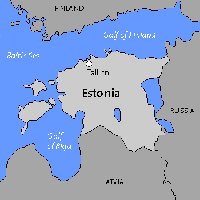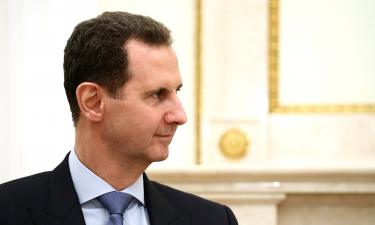Anti-Russian party wins elections in Estonia
Prime Minister Andrus Ansip's center-right Reform Party narrowly won Estonia's Parliamentary election Sunday ahead of its left-leaning coalition partner, official preliminary results showed.

With 656 of 657 districts counted, the Reform Party had 27.8 percent of the votes, ahead of the Center Party led by political veteran Edgar Savisaar with 26.1 percent, the Electoral Committee said.
If confirmed in the final tally, the result would give the two coalition partners 60 seats in the 101-member Parliament, enough to become the first government to survive an election since the Baltic country regained independence in 1991.
They could do so without the current three-party government's junior member, the agrarian People's Union, which had 7.1 percent.
However, neither Ansip nor Savisaar would commit to continue ruling together, leaving their options open to seek other partners in coalition talks in coming days.
"It's clear that people are supporting the coalition parties," the 50-year-old Ansip told The Associated Press as he watched the vote count at the Reform Party's election night gathering. But he added: "It's too early to make conclusions."
The main opposition IRL union - another center-right party - was in third place with 17.8 percent - in the partial results, which included 30,000 votes cast online earlier in the week in a landmark Internet ballot. A final vote count was expected within days, barring court challenges.
The result means President Toomas Hendrik Ilves likely will ask Ansip to form the next government of the Baltic country of 1.3 million.
Ansip pledged to continue lowering Estonia's renowned flat tax and preserve the market-friendly policies credited for helping the country achieve impressive growth.
Worries of an overheating economy have emerged, however, after Estonia posted a record 11.5 percent growth rate in 2006.
Meanwhile, high inflation has delayed Estonia's plans to adopt the EU's common currency while a westward flow of skilled workers has led to a labor shortage.
While Ansip did not rule out partnering with the IRL union, which is closer ideologically to the Reform Party, Savisaar, 56, would be hard pressed to form a coalition without the Reform Party.
Nevertheless, Savisaar said "we are open to talks with everybody."
An EU and NATO member since 2004, Estonia is known for its Internet technology and is a software development hub of online telephony company Skype. But the country grapples with some of the EU's worst health statistics, including high rates of alcoholism, HIV infections and traffic-related deaths.
The former Soviet republic is also struggling to integrate its Russian-speaking minority - about one-third of the population - which often complains of discrimination because of Estonia's stringent language laws.
Tensions with the Russian-speakers and with Moscow peaked recently over plans to dismantle the Bronze Soldier, a disputed Tallinn monument honoring Soviet soldiers killed in World War II.
Russians see it as a tribute to the Red Army's victory over Nazi Germany, but many Estonians consider it a painful reminder of five decades of Soviet oppression, the AP reports.
Ansip and Savisaar, Estonia's first prime minister after regaining independence, have maintained a pragmatic political alliance for two years despite political differences.
Savisaar, whose party draws support from Russian-speakers, favors a progressive tax system and a more generous welfare system to help narrow the gap between rich and poor.
About 61 percent of the 895,000 registered voters turned out at the polls, according to preliminary figures.
The election was the world's first Parliamentary ballot to allow Internet voting. Officials said the system proved reliable in municipal elections in 2005 despite concerns about hacker attacks, identity fraud and vote count manipulation.
Traditionally Estonia's governments have been short-lived. None of the 12 Cabinets since 1991 have stayed in power for a full four-year term.
Subscribe to Pravda.Ru Telegram channel, Facebook, RSS!





